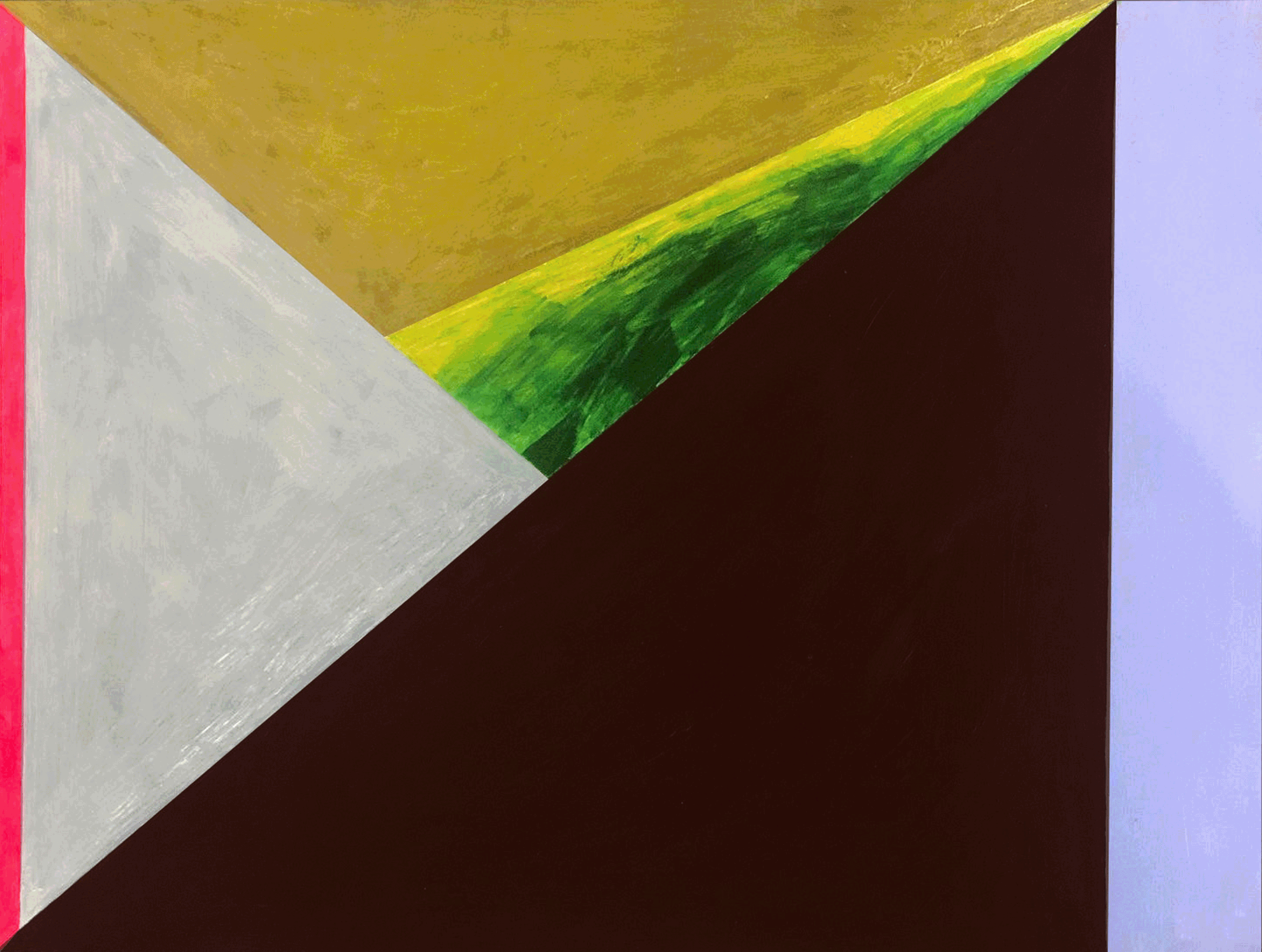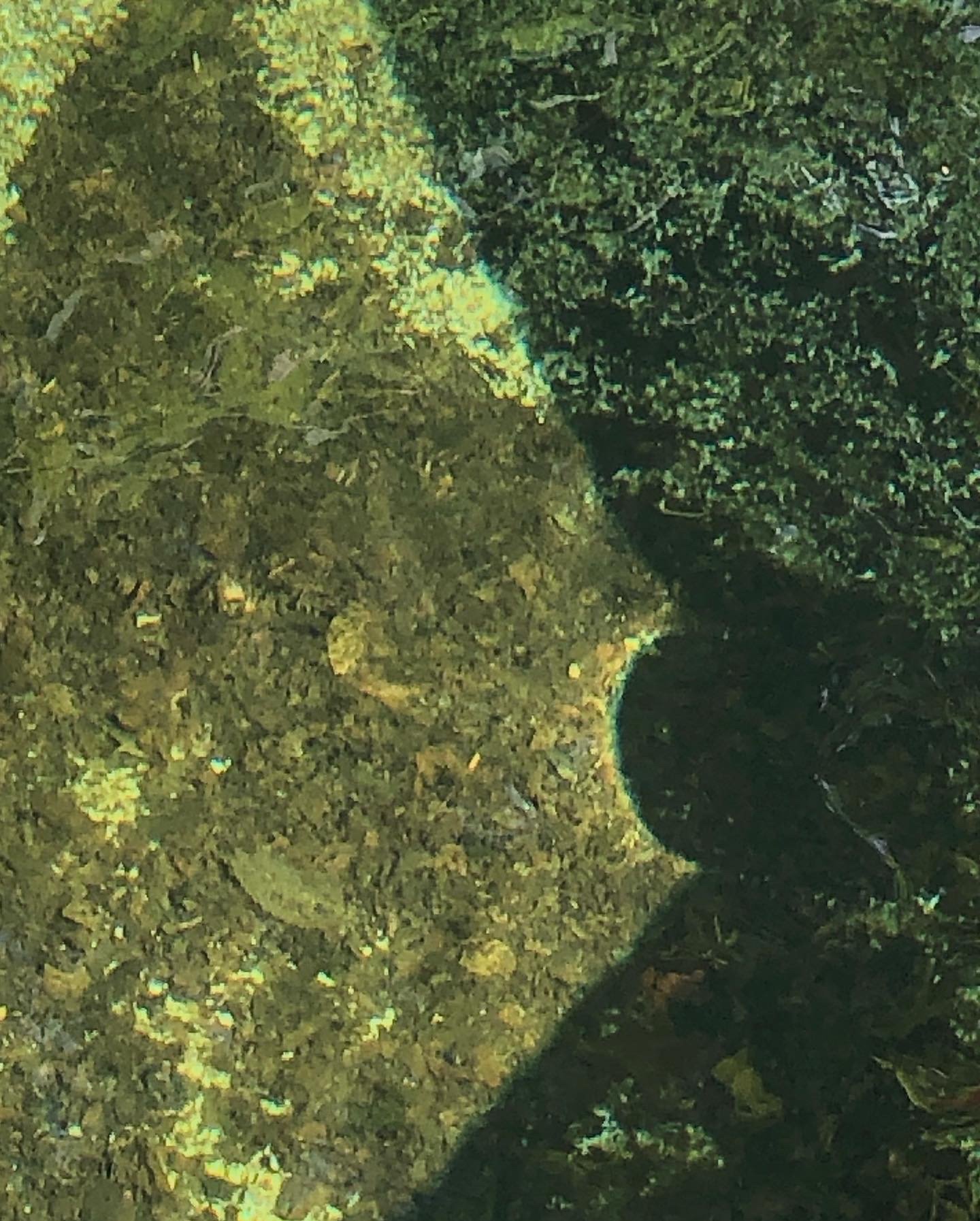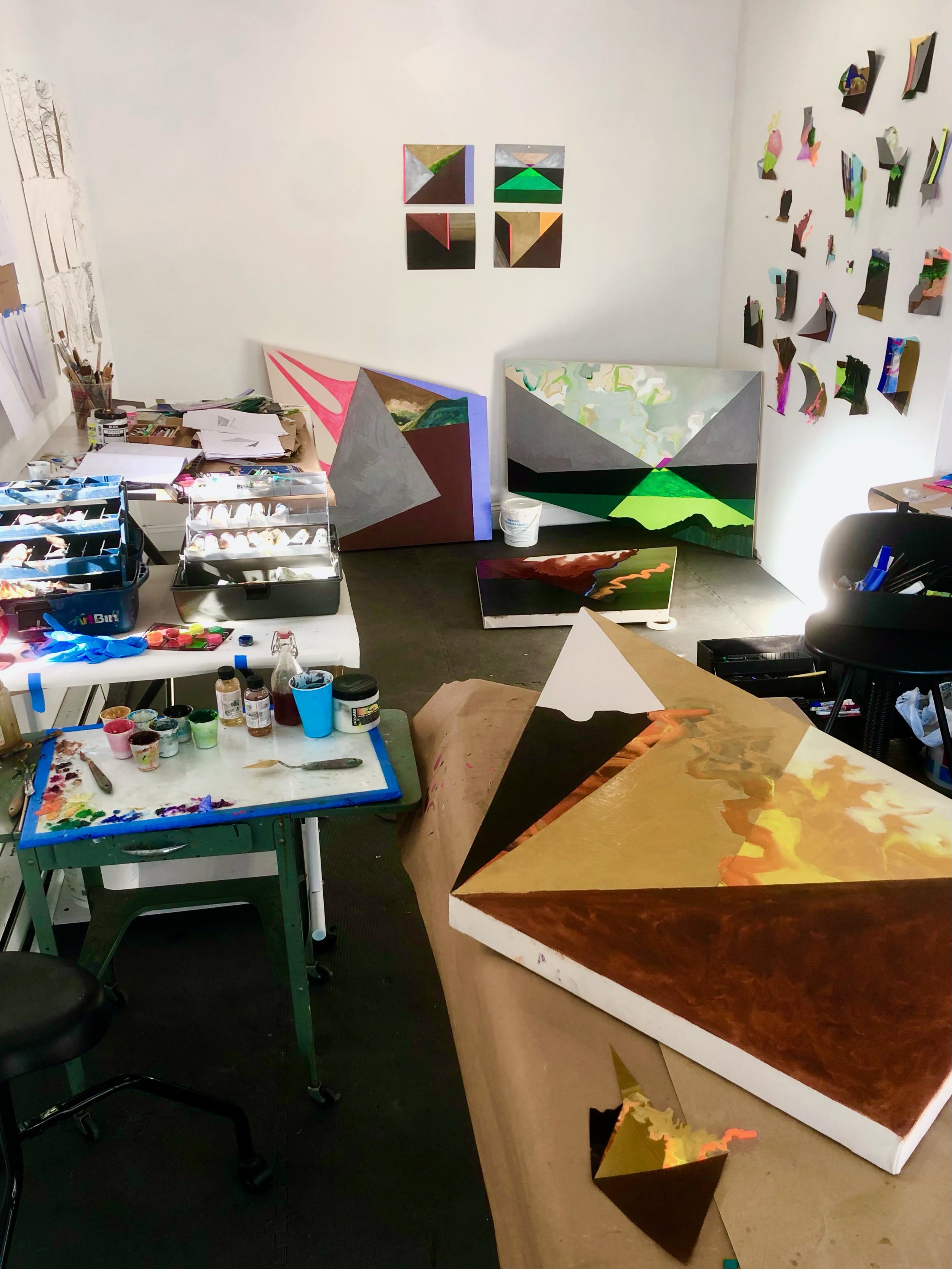Extending Ecology:
An Oika Project at Hubbard Brook Experimental Forest
White Mountains, NH
[Exhibition at Museum of the White Mountains]
“Extending Ecology is an ongoing, experimental, Oika collaboration between an ecologist-turned-writer and social innovator (Rich Blundell), a visual artist (Rita Leduc) and selected natural habitats. The intention of an Oika collaboration is to explore pathways by which the healing, ecological dynamics of nature can extend into culture through art. The first instantiation of Extending Ecology features the US Forest Service’s Hubbard Brook Experimental Forest (HBEF) in New Hampshire’s White Mountain Region.” — Blundell, 2021
As the project unfolds, artwork will accumulate in the gallery above. But because this project is ongoing, because it’s bigger than the visual works themselves, and because I believe in the benefits of a transparent process, this page also serves as an abbreviated living record of the collaboration thus far.
For those who would like to delve deeper into Extending Ecology: HBEF, current resources include:
Exhibition at Museum of the White Mountains (virtual exhibition here and pdf with essay by anthropologist David Syring here) - 10/7/23-12/15/23
“The Coming AI Revolution: Artful Intelligence in the Beautiful Future” talk at Syracuse U (watch recording here) - 9/19/24
Panel Discussion at Museum of the White Mountains (watch recording here) - 10/4/23
Talk at The Nature of Cities conference in Berlin (watch recording here) - 6/6/24
A 10-min Lightening Talk from HBEF Art-Sci Workshop - Jan 2023
A quick video introduction to Ecology Extended - April 2022
ADDITIONAL EXTENSIONS: Interview on Dartington Trust’s “Arts and Ecology” podcast, Exhibition, Seed Session, and Show+Tell at The Nature of Cities conference in Berlin (6/2024); Segment on exhibition airs on WCVB (1:30-2:50); Anthropologist David Syring speaks about the exhibition in the context of a necessary unity between Arts, Sciences, and Humanities (11/1/23); The Place Collective Blog (11/2023), Walking Backwards’ cumulative, responsive performances (Oct-Dec 2023), New Hampshire Business Review (11/2023), workshops at Plymouth State and Syracuse University (Fall 2023); MWM panel discussion (1/26/23 - recording here); The Nature of Nantucket Podcast Part I and Part II, “Field Station: Art-Science in the White Mountains,” at Museum of the White Mountains (11/19/22-2/11/23); HBEF Art-Sci conference (1/24/23-1/26/23); Exhibition and talk at Museum of the White Mountains (6/4/22 +7/12/22; watch recording here); Enaction Workshop at Dartington Hall, UK (for Sentient Performativities, 6/26-6/30/22); presentation at Rutgers’ Climate Transformation conference, virtual (5/4/22); Exhibition (5/7-6/4/22) and conversation (5/22/22) at Williamsburg Art and Historical Center, NY; Publication in “An Anthology of Warm Data,” unpsychology magazine; workshop and concurrent session at OBFS annual meeting (9/12-9/17/22).
Our extremely detailed, behind-the-scenes Trello Board
Oika: Principles, practices, projects
Instagram @ritaleduc
Deepest extensions of gratitude go to Dr. Rich Blundell and Oika, Dr. Lindsey Rustad and colleagues at HBEF, and Broto: Art-Climate-Science for their participation in and support of Extending Ecology: HBEF.
PROJECT KICK-OFF TOUR @HBEF: September 18-19, 2021
Here we go! Rich and I met Lindsey Rustad, lead forest ecologist and human representative of HBEF, for a weekend tour of the forest. Lindsey provided a generous, riveting, and enthusiastic overview of the research happening at Hubbard Brook as we explored the 7,800 acre temperate woodland valley. Established in 1955 by the US Forest Service, Hubbard Brook is known internationally for its Hubbard Brook Ecosystem Study, which has provided long term studies of air, water, soils, plants, and animals since 1963 (this study is famous for discovering and ameliorating acid rain). After a weekend taking it all in, let me tell you: this research is comprehensive and critical. But beyond learning about the science, we also spent time sharing ideas and learning about each other, which was just as enjoyable, thought-provoking, and salient.
RESIDENCY: September 25 - October 7, 2021
Five days later, Rich and I returned to HBEF to ensue 12-days of rigorous, immersive fieldwork where we exercised our individual practices as well as shared them with each other. Put simply, our overarching goal was to open ourselves to the forest and listen. This may sound unambitious, but we both know from experience that when one succeeds in this goal, a cascade of others follow. One of the beautiful things about this project - and a way in which both our practices align - is that intuition is our guide. This was reinforced formally when we were invited to be part of Broto’s Collaboration Blueprint trial which specifically strives to relieve the “Burden of Outcome” from a collaboration. There is something in this way of working that allows the experience to more readily thrive. I think it has to do with reliance on intuition necessitating presence. In that presence, one finds a trust and confidence that keeps the ground fertile.
I could write pages about these 12 days, but the time is perhaps best summarized in this snippet Rich and I wrote together:
“Because of the notable ways in which our practices merged and diverged during fieldwork, our bodies and minds were offered diverse access points for the lived experiences of place. Once we established rapport with the habitat, we discovered different modalities circulating through the shared ecosystem of materiality and consciousness. These experiences yielded profound new senses of interconnection and belonging. We left the forest both embodied and enacted. In other words, in addition to dissolving the mind/body dualism, we also perturbed the inner/outer divide of personal identity. The forest shifted into us and us, into the forest.”
This is no exaggeration or metaphor; this period of time filled me up with ideas, experiences, emotions, understanding, and yes, with the forest itself.
After my usual few days of absorbing the place - which this time was enriched by Rich’s expertise and concepts in Oika’s curriculum - I started making integrated photographs. For reasons I’ll explain in detail later, I chose to focus on the weirs and areas around the brook. Photos of some of these - and studio work - are below.
Special thanks to Joe Klementovich who documented the integrated photograph process on my very last day!
Art @HB: September 25 - October 7, 2021
For a more detailed account of these residency days, head to @ritaleduc.
COLLABORATION, SYNTHESIS + PRODUCTION
October 8, 2021 - January 9, 2022
Oooooof. Leaving Hubbard Brook was hard. It felt like I was abandoning a trust that the forest so innocently, so genuinely and selflessly gave to me. Driving away was heart-wrenching.
But - but - the trust is actually still there and not a thing is being abandoned. This brings the topic of the “physical world” to the fore. Recall what we wrote above: the place is in us now. And exactly what we are going to do with that is precisely the question of Extending Ecology.
So between October 8 and January 9, I spent time in my studio, working and playing, conversing with Rich, working and playing, listening to things and reading things and diving deep into Oika things and - yep - working and playing. I created about 20 collages with scraps from the on-site integrated photographs with the intention of turning a chosen few into paintings. From the HB studio, I also had my drawings of the brook and about 100 thumbnail studies of various ecological elements in the forest. So, much like the brook with its water, data, minerals, and detritus, I spent studio time with my images, feelings, conversations, memories, understandings, imaginings, and mysteries all rippling and ruffling around inside and outside my being, working on me.
But the question was: how to extend it? How to transfer the feeling of understanding and passion and energy and reciprocity and gratitude and trust and knowing and kinship? Not to mention the information; in this particular place, big things are happening! Scientists are looking at extreme weather conditions, collecting baseline data and searching for signals among the norm. The forest, too, is plugging away, growing, accumulating, giving. How do we use what we all have to give? How does Extending Ecology engage in a way that we can also plug away and prosper and give?
I wasn’t sure, but Rich and I had some ideas. The forest was still talking to us, and we never stopped listening.
Skip to the bottom for in-progress studio photos but first: a return trip to HBEF…!
RETURN TO HBEF: January 10-17, 2022
Rich and I always knew we had to revisit Hubbard Brook in the winter, but for good measure, we made a long list of intentions for the trip. Despite this list, I did not know what I would find upon arrival. Of all the locations I’ve collaborated with, I’ve never returned to a site mid-project. Would it be the place I remembered? How much had my memory morphed it in transport through space and time? Would new conversations necessitate that I change course in the studio? Would the fact of Time just take over the conversation, rendering all else moot?
Rich and I like to talk about surprise. Sometimes, surprises mean you’re not paying attention, but other times, the ability to be surprised means you’ve let go of the reigns just enough to acknowledge that you weren’t driving to begin with. That’s the best kind of surprise and it’s what I found when I returned to Hubbard Brook.
The rhythm of the winter was definitely different. In general, Rich and I would work separately in the morning and then join up in the afternoon for a hike up Hubbard Brook Road and a sled / snowboard down. We’d end our day at the brook and discuss. Our heads were further along in the project, so our focus was different than in the Fall, but the forest was further along too and still palpably guiding us. Topics the forest presented included:
The misconception of stillness in the iced-over brook and moments where the water’s relentless current broke through
The initial feeling of un-belonging in the winter landscape that was quickly overwritten with overwhelming familiarity
Concepts of transparency (snow, ice, trees, dreams)
Attention to the “quieter” colors and lines of the forest that are drowned out in the more ostentatious warmer months
Timescales: of ice (slow to build, quick to break), rocks, snow, ideas
The winter forest’s mind-boggling simultaneity of silence and cacophony
The feeling of recognizing and being recognized: sharing in something bigger than ourselves





































































































































































































